Voyager: 15 incredible images of our solar system captured by the twin probes (gallery)
The twin probes have captured some remarkable images of our cosmic neighborhood.

NASA's twin probes Voyager 1 and Voyager 2 have captured some truly remarkable images of our solar system and are currently roaming through interstellar space.
Despite its name Voyager 2 launched before Voyager 1 , when it lifted off from Cape Canaveral Space Launch Complex 41 aboard a Titan IIIE-Centaur on Aug. 20, 1977. Voyager 1 followed suit about two weeks later on Sept. 5.
While Voyager 1 primarily focused on Jupiter and Saturn , Voyager 2 visited both gas giants and then ventured on to Uranus and Neptune . But the duo didn't stop there. Voyager 1 officially entered interstellar space on Aug. 25, 2012, while Voyager 2 entered on Nov. 5, 2018. The pair continue to journey through the cosmos and have enough power and fuel to keep scientific instruments running until at least 2025, according to NASA .
Here we celebrate the achievements of both Voyager 1 and Voyager 2 with some incredible images captured by the pair.
This image was taken when NASA's Voyager 1 spacecraft zoomed toward Jupiter in January and February 1979, capturing hundreds of images during its approach, including this close-up of swirling clouds around Jupiter's Great Red Spot .
This image of the Earth and moon are in a single frame. Voyager was the first spacecraft to achieve this and captured the iconic image on Sept. 18, 1977, by Voyager 1 when it was 7.25 million miles from Earth. The moon is at the top of the picture and beyond the Earth as viewed by Voyager.
Color composite by Voyager 2 showing Jupiter's faint ring system. Images captured in July 1979.
A Voyager 1 image of Jupiter's moon Io showing the active plume of the volcano Loki. The heart-shaped feature southeast of Loki consists of fallout deposits from the active plume Pele. The images that make up this mosaic were taken from an average distance of approximately 340,000 miles (490,000 kilometers) from the moon.
Layers of haze covering Saturn's moon Titan are seen in this image taken by Voyager 1 on Nov. 12, 1980, at a range of 13,700 miles (22,000 km). This false-color image shows the details of the haze that covers Titan. The upper level of the thick aerosol above the moon's limb appears orange.
This view of Uranus was recorded by Voyager 2 on Jan. 25, 1986, as the spacecraft left the planet behind and set forth on the cruise to Neptune. Even at this extreme angle, Uranus retains the pale blue-green color seen by ground-based astronomers and recorded by Voyager during the historic encounter.
This Voyager 2 high-resolution color image provides obvious evidence of vertical relief in Neptune's bright cloud streaks. These clouds were observed at a latitude of 29 degrees north near Neptune's east terminator, the "line" on a planet where daylight meets darkness.
Global color mosaic of Triton , taken in 1989 by Voyager 2 during its flyby of the Neptune system. The color was synthesized by combining high-resolution images taken through orange, violet and ultraviolet filters; these images were displayed as red, green and blue images and combined to create this color version.
Saturn and three of its moons, Tethys, Dione and Rhea, seen by a Voyager spacecraft on Aug. 4, 1982, from a distance of 13 million miles (21 million km).
This narrow-angle color image of the Earth, dubbed the "Pale Blue Dot," is a part of the first ever 'portrait' of the solar system taken by Voyager 1. The spacecraft acquired a total of 60 frames for a mosaic of the solar system from a distance of more than 4 billion miles (6 billion km) from Earth and about 32 degrees above the ecliptic, which is the plane that contains most of the planets of the solar system.
Voyager 1 took photos of Jupiter and two of its satellites (Io, left, and Europa ).
Enhanced color view of Saturn's ring system captured by Voyager 2 on Aug. 17, 1981, at a distance of 5.5 million miles (8.9 million km). The color variations between the rings possibly indicate variations in chemical composition from one part of Saturn's ring system to another.
Close-up of the surface of Jupiter's moon Europa captured by Voyager 2 at a distance of 152,000 miles (246,000 km).
Voyager 2 captured this image of Neptune's rings on Aug. 26, 1989, from a distance of 175,000 miles (280,000 km).
A false-color image of Callisto captured on July 7, 1979, by Voyager 2 at a distance of about 677,000 miles (1.09 million km). Callisto is the second largest moon of Jupiter and is the most heavily cratered of the Galilean satellites.
Daisy Dobrijevic joined Space.com in February 2022 having previously worked for our sister publication All About Space magazine as a staff writer. Before joining us, Daisy completed an editorial internship with the BBC Sky at Night Magazine and worked at the National Space Centre in Leicester, U.K., where she enjoyed communicating space science to the public. In 2021, Daisy completed a PhD in plant physiology and also holds a Master's in Environmental Science, she is currently based in Nottingham, U.K. Daisy is passionate about all things space, with a penchant for solar activity and space weather. She has a strong interest in astrotourism and loves nothing more than a good northern lights chase!
- Mike Wall Senior Space Writer
SpaceX launches 20 Starlink internet satellites from California (video, photos)
SpaceX stacks Starship megarocket ahead of 5th test flight (photos)
Canon PowerShot Zoom digital monocular review

Most Popular
- 2 Weird striped rock 'unlike any seen on Mars' found by Perseverance rover. Here's why NASA's excited
- 3 Blue Origin fires up 2nd stage of huge New Glenn rocket ahead of debut launch (video)
- 4 SpaceX's Elon Musk calls on FAA chief to resign
- 5 Where did Mars' atmosphere go? Scientists say it may be 'hiding in plain sight'

Voyager 1 and 2
Images voyager took.
The Voyager 1 and 2 spacecraft explored Jupiter, Saturn, Uranus and Neptune before starting their journey toward interstellar space. Here you'll find some of those iconic images, including "The Pale Blue Dot" - famously described by Carl Sagan - and what are still the only up-close images of Uranus and Neptune.
Pale Blue Dot
The Pale Blue Dot is an iconic photograph of Earth taken on Feb. 14, 1990, by NASA’s Voyager 1 spacecraft.
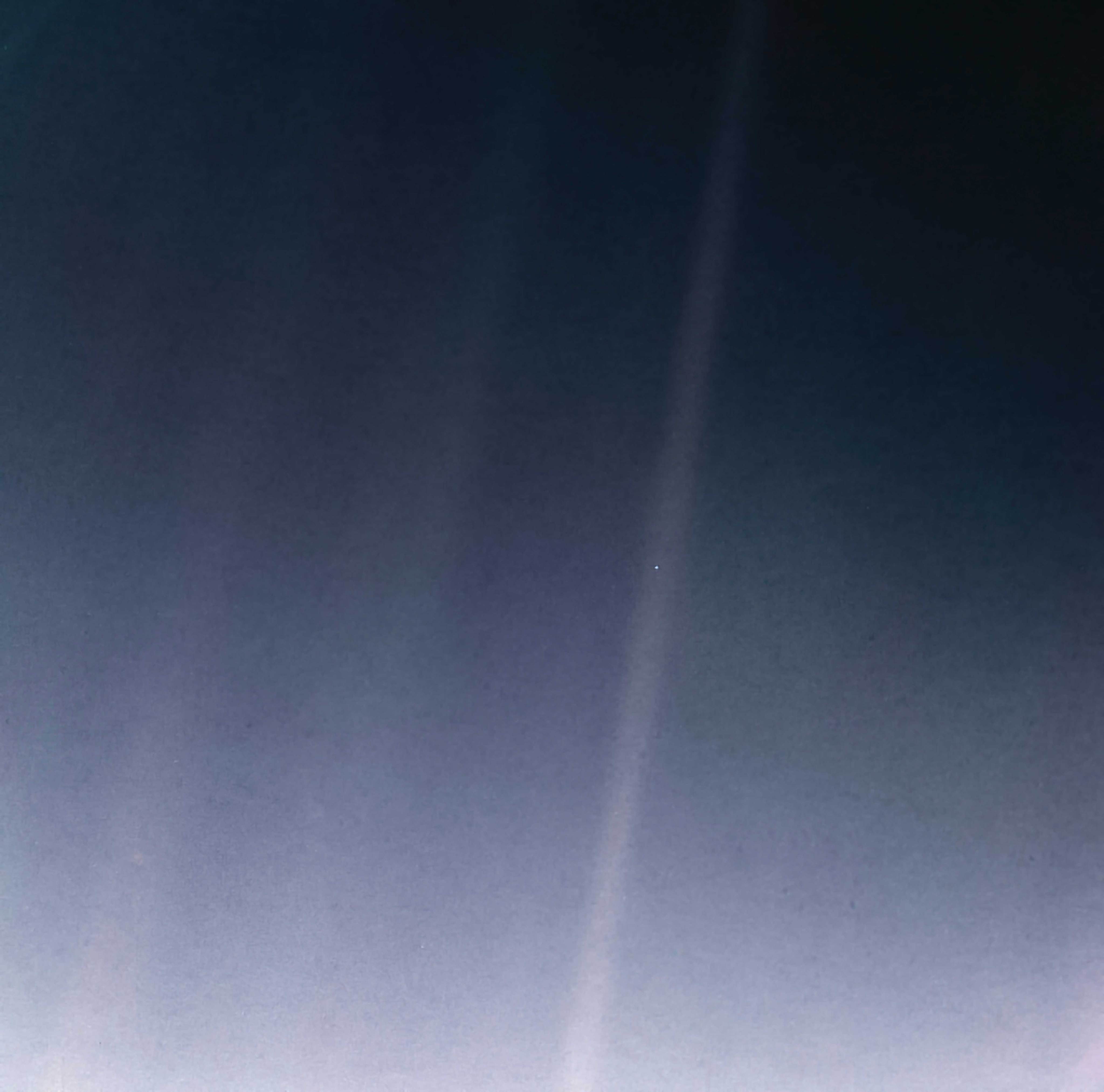
Photography of Jupiter began in January 1979, when images of the brightly banded planet already exceeded the best taken from Earth.
Voyager at Jupiter
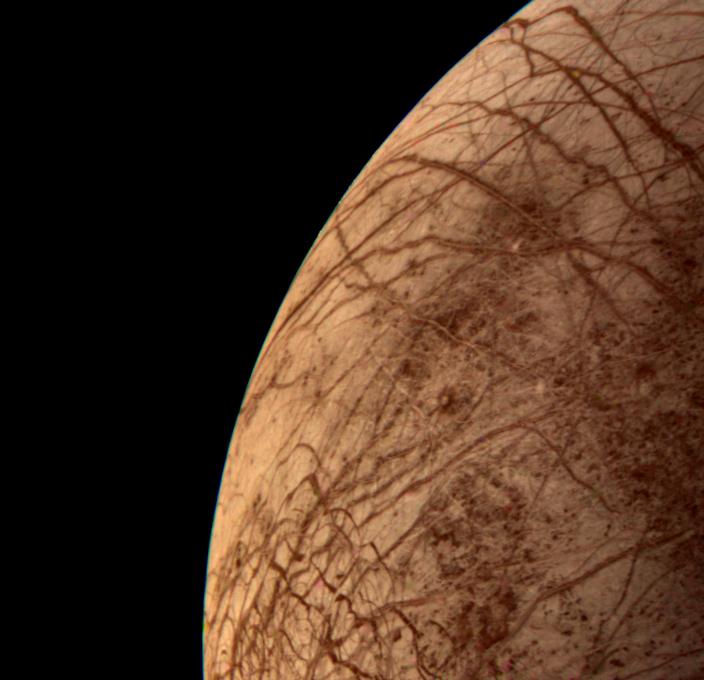
The Voyager 1 and 2 Saturn encounters occurred nine months apart, in November 1980 and August 1981.
Voyager at Saturn
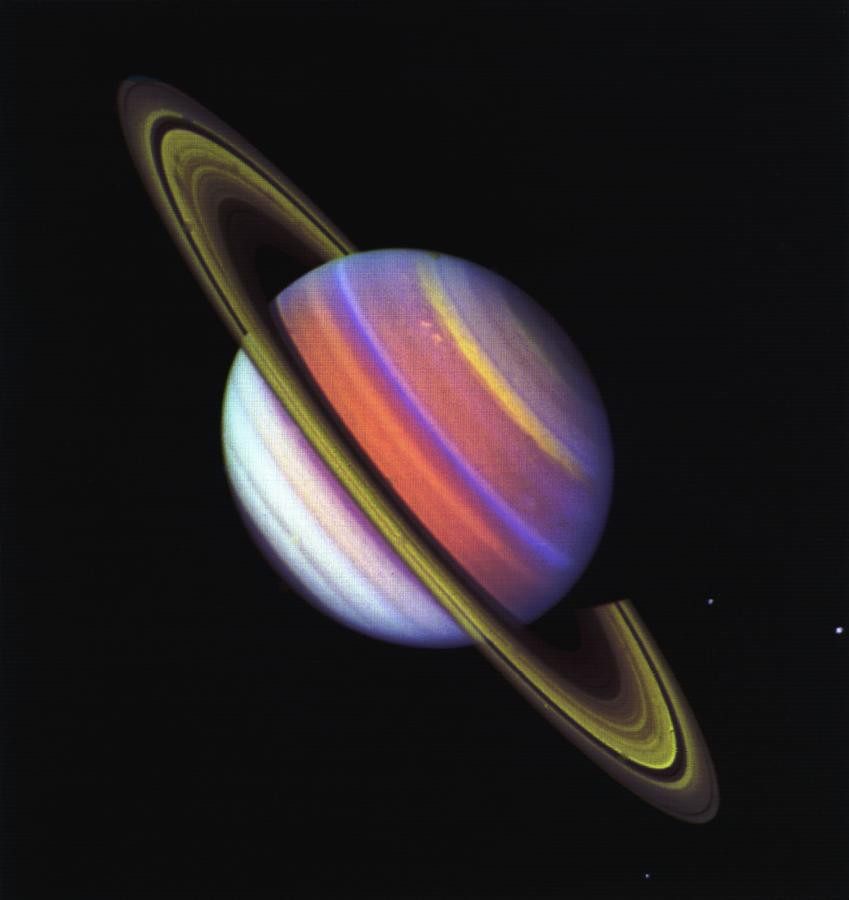
Voyager 2 spacecraft flew past distant Uranus, the seventh planet from the Sun, in January 1986.
Voyager at Uranus
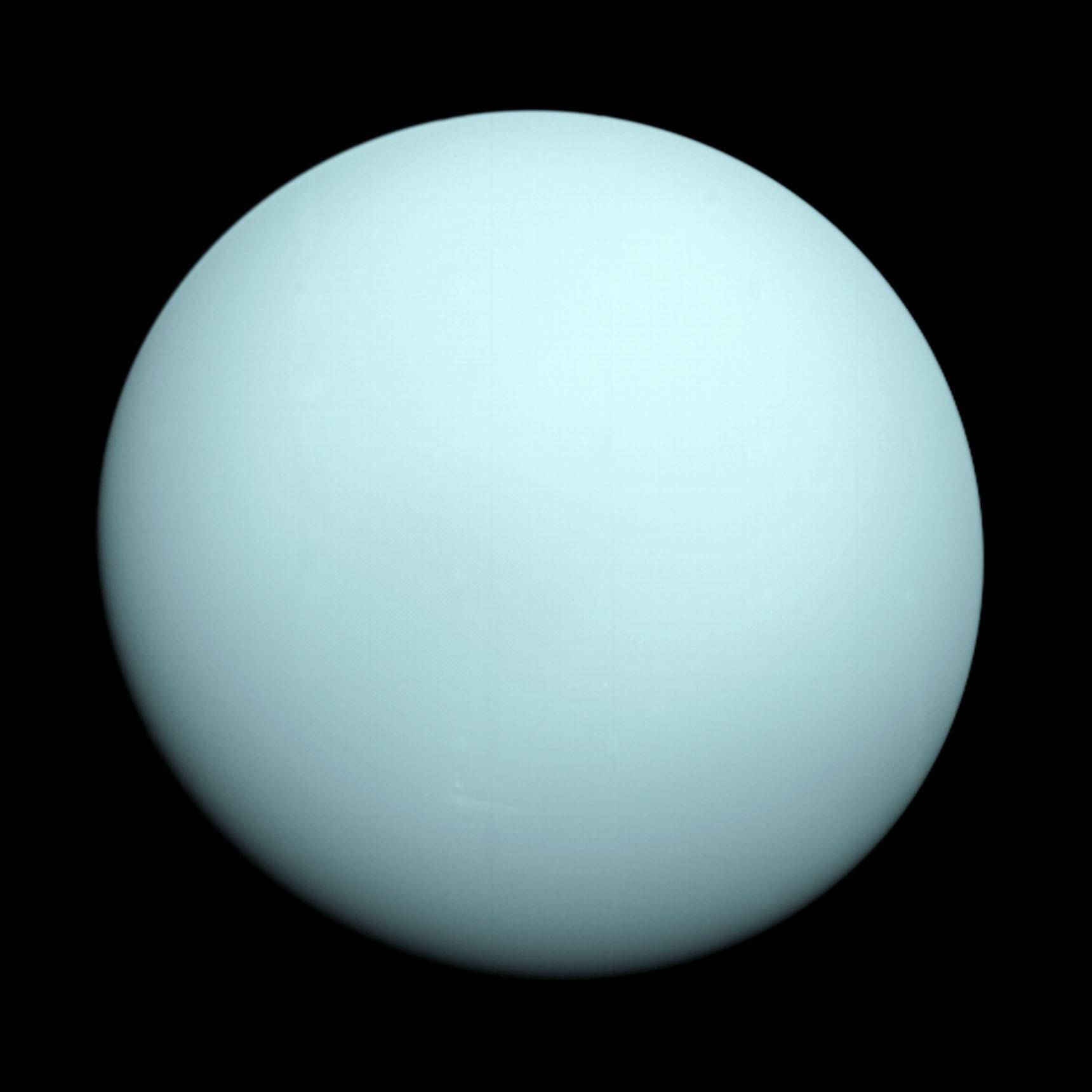
In the summer of 1989, NASA's Voyager 2 became the first spacecraft to observe the planet Neptune up close, its final planetary target.
Voyager at Neptune
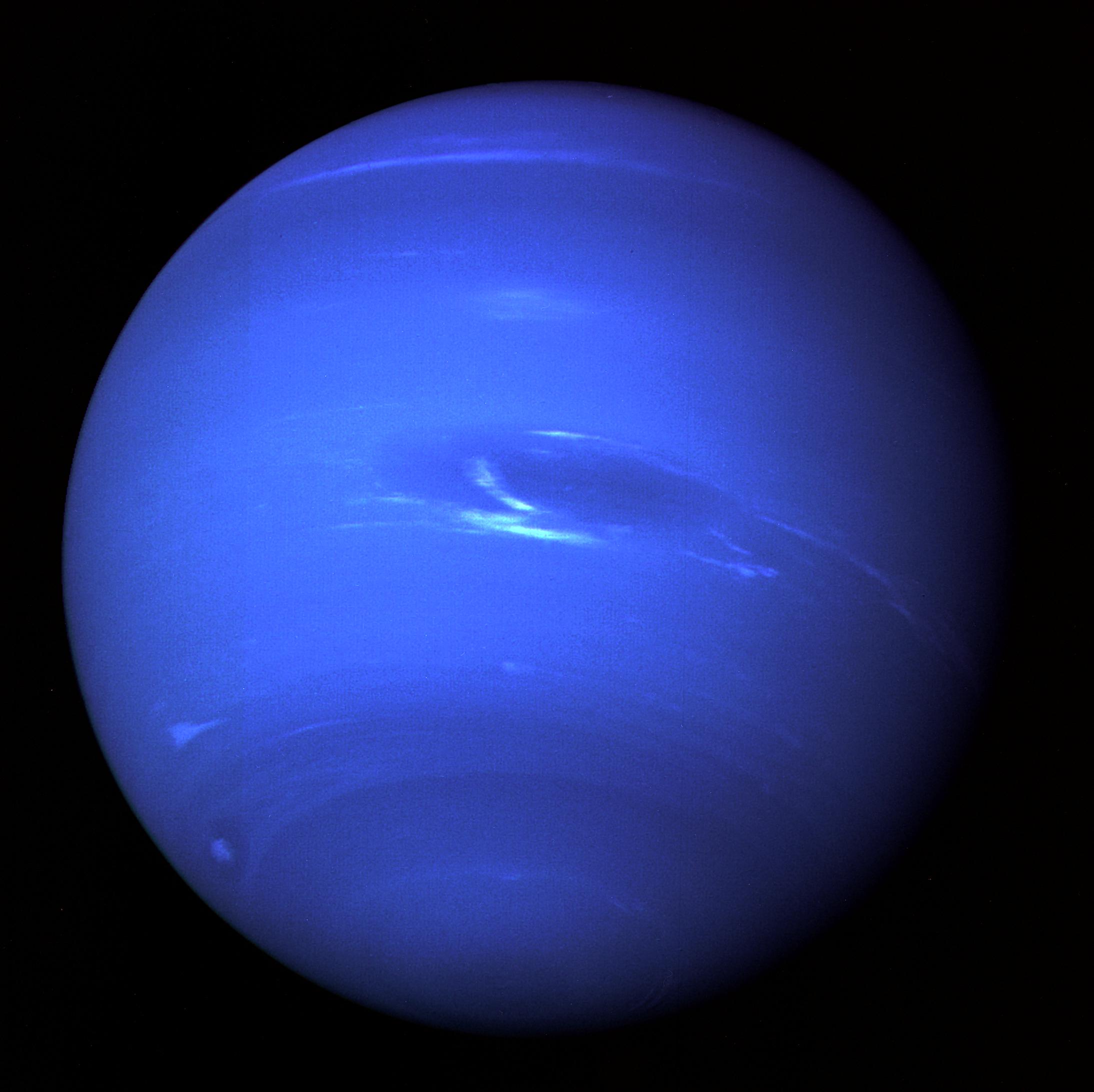
Solar System Family Portrait
This narrow-angle color image of the Earth, dubbed 'Pale Blue Dot', is a part of the first ever 'portrait' of the solar system taken by Voyager 1.
Discover More Topics From NASA

Planetary Data System
Cartography and Imaging Sciences
Nearly three decades ago, on November 12, 1980 at 3:56 PM PST, the Voyager 1 spacecraft made its closest approach to Saturn in mankind's first detailed reconnaissance of that giant planet. One hour and 25 minutes later, the signal from that moment arrived at Earth, while the world waited in awe as picture after picture unfolded on monitors at JPL showing never-before-seen details of the Saturn, its rings and satellites. Voyager remains NASA's most successful planetary mission as measured by total number of scientific discoveries.
Voyager 1 flew under Saturn's south pole, a requirement to get a close look at Titan. Saturn's gravity caused the trajectory to bend northward out of the ecliptic plane, precluding any further planetary encounters. The success of the Titan encounter (hazy though it was), set the stage for Voyager 2 to continue on to Uranus and Neptune. Had Titan not been successful, Voyager 2 would have followed its in the footsteps of its twin, and the Uranus and Neptune encounters would not have been possible. The Voyager 1 and 2 spacecrafts each carried two cameras, wide-angle and narrow-angle.
Calibrated and geometrically corrected versions of all of the Voyager images can be found at:
- https://pds-rings.seti.org/voyager/iss/index.html
- http://pds-rings.seti.org/voyager/iss/calib_images.html
Imagery and Data Quick Start
Atlas: Image Search
Atlas allows users to explore, search, and download imaging and data products.
Photojournal
Photojournal allows users to explore, search, and download some of the most beautiful images ever captured of our universe.
Related Links
About the Mission
- Mission Home Page
- Mission Overview
- Views of the Solar System
About the Science
- Science Summary
About the Instruments
- Voyager Instrument Map
Documentation
- Voyager Documents
See the 10 Best Photos Taken by Voyager 2

More Must-Reads from TIME
- Iran, Trump, and the Third Assassination Plot
- Ellen DeGeneres’ Unfunny Netflix Special Leaves So Much Unsaid
- Welcome to the Golden Age of Scams
- Did the Pandemic Break Our Brains?
- 33 True Crime Documentaries That Shaped the Genre
- The Ordained Rabbi Who Bought a Porn Company
- Introducing the Democracy Defenders
- Why Gut Health Issues Are More Common in Women
Contact us at [email protected]
- Login / Sign Up
The 116 photos NASA picked to explain our world to aliens
by Joss Fong

If any intelligent life in our galaxy intercepts the Voyager spacecraft, if they evolved the sense of vision, and if they can decode the instructions provided, these 116 images are all they will know about our species and our planet, which by then could be long gone:
When Voyager 1 and Voyager 2 launched into space in 1977, their mission was to explore the outer solar system, and over the following decade, they did so admirably.
With an 8-track tape memory system and onboard computers that are thousands of times weaker than the phone in your pocket, the two spacecraft sent back an immense amount of imagery and information about the four gas giants, Jupiter, Saturn, Uranus, and Neptune.
But NASA knew that after the planetary tour was complete, the Voyagers would remain on a trajectory toward interstellar space, having gained enough velocity from Jupiter's gravity to eventually escape the grasp of the sun. Since they will orbit the Milky Way for the foreseeable future, the Voyagers should carry a message from their maker, NASA scientists decided.
The Voyager team tapped famous astronomer and science popularizer Carl Sagan to compose that message. Sagan's committee chose a copper phonograph LP as their medium, and over the course of six weeks they produced the "Golden Record": a collection of sounds and images that will probably outlast all human artifacts on Earth.
How would aliens know what to do with the Golden Record?
The records are mounted on the outside of Voyager 1 and Voyager 2 and protected by an aluminum case. Etched on the cover of that case are symbols explaining how to decode the record. Put yourself in an extraterrestrial's shoes and try to guess what the etchings seek to communicate. Stumped? Hover over or click on the yellow circles for the intended meaning of these interstellar brain teasers:

What else is on the Golden Record?
Any aliens who come across the Golden Record are in for a treat. It contains:
- 116 images encoded in analog form depicting scientific knowledge, human anatomy, human endeavors, and the terrestrial environment. (These images appear in color in the video above, but on the record, all but 20 are black and white.)
- Spoken greetings in more than 50 languages.
- A compilation of sounds from Earth.
- Nearly 90 minutes of music from around the world. Notably missing are the Beatles, who reportedly wanted to contribute "Here Comes the Sun" but couldn't secure permission from their record company. For the video above, I chose to include "Dark Was the Night" by Blind Willie Johnson, a 1927 track Sagan described as "haunting and expressive of a kind of cosmic loneliness."
The committee also made space for a message from the president of the United States:

Where are they now?
Incredibly, Voyager 1 and Voyager 2 are still communicating with Earth — they aren't expected to lose power until the 2020s. That's how NASA knew that Voyager 1 became the first ever spacecraft to enter interstellar space in 2012: The probe detected high-density plasma characteristic of the space beyond the heliosphere (the bubble of solar wind created by the sun).
Voyager 2 is currently traveling through the outer layers of the heliosphere. It's moving southward relative to Earth's orbit, while Voyager 1 is moving northward. In more than 40,000 years, they will each pass closer to another star than they are to our sun. (Or, more accurately, stars will pass by them).
There are three other spacecraft headed toward interstellar space; two of them, Pioneer 10 and Pioneer 11, are shown in this somewhat dated illustration:
NASA launched Pioneer 10 and 11 in 1972 and 1973, and has since lost communication with both. They aren't traveling as fast as the Voyagers, but they will eventually enter interstellar space as well.
They too, carry a message for extraterrestrial life, in the form of a 6-by-9-inch gold-anodized aluminum plaque, designed by Sagan and other members of the team that would go on to create the Voyager Golden Record five years later.

Like the Golden Record, the plaque features the pulsar map, uses hydrogen to define the binary units, and depicts humankind. NASA faced a backlash for the nudity of the human figures.
Another interstellar message
The fifth probe that will exit our solar system is New Horizons , the spacecraft that flew by Pluto in 2015. It is headed in a broadly similar direction as Voyager 2, but having launched in 2006, it's many years behind. It may not reach interstellar space for another 30 years.
New Horizons was sent into space without any message like the Golden Record, but it's not too late to add one. A group led by Jon Lomberg , a member of Sagan's Golden Record team, is trying to convince NASA to upload a crowdsourced message to the probe for any intelligent life that might come across it.
The spacecraft's memory system is similar to a flash drive, and it wouldn't be as durable as the copper records on Voyager. "The most conservative estimates are a lifetime of a few decades. Other physicists and engineers believe the message might remain for centuries or even millennia," says the website of the message initiative, adding, more hopefully, "Another unknown is the advanced technology possessed by any ETs who find the spacecraft. They might have ways of reading the faded memory we cannot yet imagine."
Most Popular
- One chart shows how Hurricane Helene could turn into a monstrous storm
- Sign up for Vox’s daily newsletter
- Has Harris pulled ahead of Trump? The state of the 2024 polls, explained.
- Take a mental break with the newest Vox crossword
- The Republican Party is less white than ever. Thank Donald Trump.
Today, Explained
Understand the world with a daily explainer plus the most compelling stories of the day.
This is the title for the native ad
More in Video

Whether the US bans it everywhere could be up to the next president.

Why do so many people think pit bulls are violent?

Four reporters who have covered Kamala Harris at different points in her career narrate her rise from San Francisco prosecutor to presidential nominee.

The post-Covid pop-up boom, explained.

Why AI researchers think we’re close to getting interspecies chatbots.

Lawns aren’t natural, so why do so many Americans have one?

Suggested Searches
- Climate Change
- Expedition 64
- Mars perseverance
- SpaceX Crew-2
- International Space Station
- View All Topics A-Z
Humans in Space
Earth & climate, the solar system, the universe, aeronautics, learning resources, news & events.
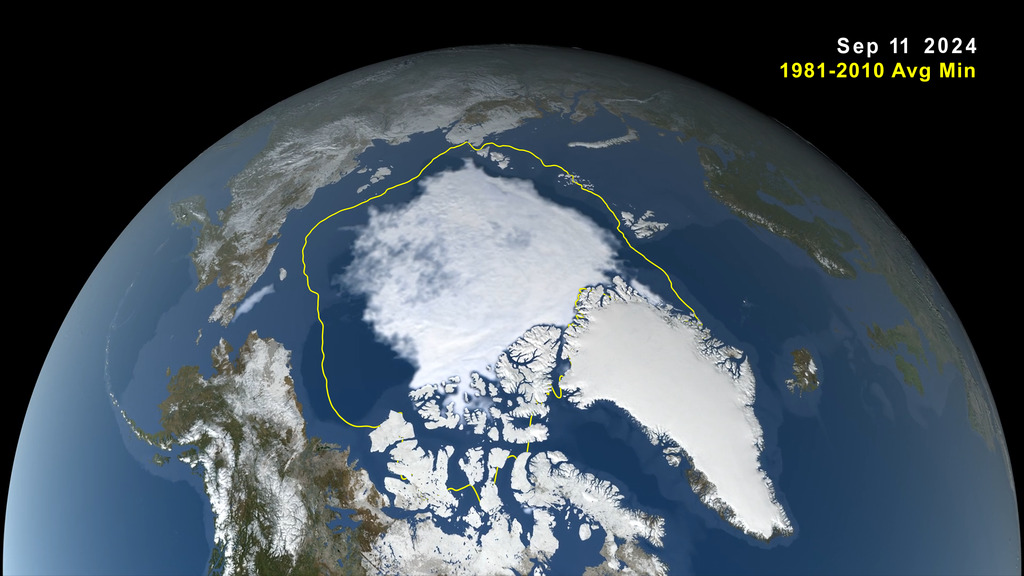
Arctic Sea Ice Near Historic Low; Antarctic Ice Continues Decline
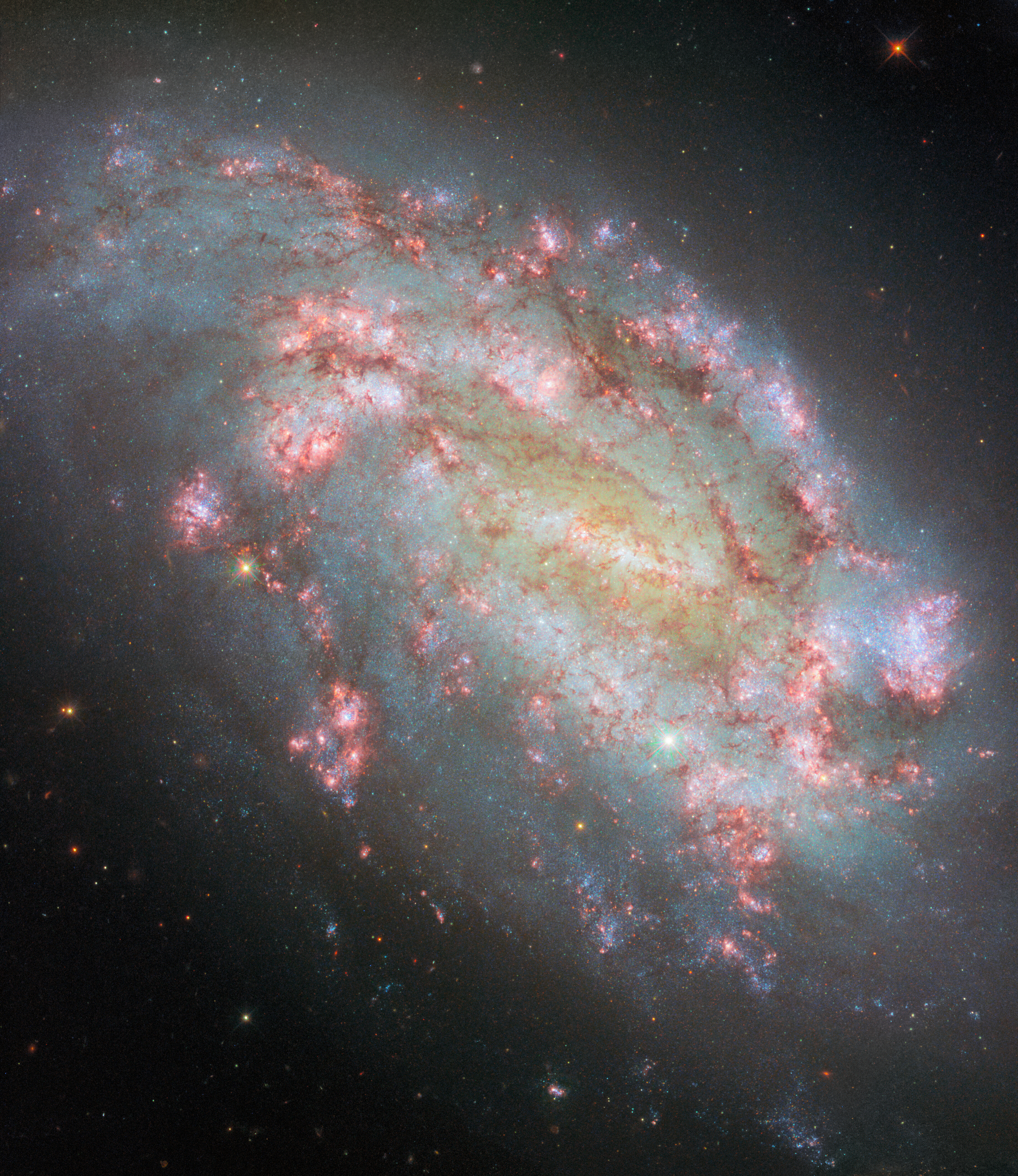
Hubble Lights the Way with New Multiwavelength Galaxy View

What’s Up: September 2024 Skywatching Tips from NASA
- Search All NASA Missions
- A to Z List of Missions
- Upcoming Launches and Landings
- Spaceships and Rockets
- Communicating with Missions
- James Webb Space Telescope
- Hubble Space Telescope
- Why Go to Space
- Commercial Space
- Destinations
- Living in Space
- Explore Earth Science
- Earth, Our Planet
- Earth Science in Action
- Earth Multimedia
- Earth Science Researchers
- Pluto & Dwarf Planets
- Asteroids, Comets & Meteors
- The Kuiper Belt
- The Oort Cloud
- Skywatching
- The Search for Life in the Universe
- Black Holes
- The Big Bang
- Dark Energy & Dark Matter
- Earth Science
- Planetary Science
- Astrophysics & Space Science
- The Sun & Heliophysics
- Biological & Physical Sciences
- Lunar Science
- Citizen Science
- Astromaterials
- Aeronautics Research
- Human Space Travel Research
- Science in the Air
- NASA Aircraft
- Flight Innovation
- Supersonic Flight
- Air Traffic Solutions
- Green Aviation Tech
- Drones & You
- Technology Transfer & Spinoffs
- Space Travel Technology
- Technology Living in Space
- Manufacturing and Materials
- Science Instruments
- For Kids and Students
- For Educators
- For Colleges and Universities
- For Professionals
- Science for Everyone
- Requests for Exhibits, Artifacts, or Speakers
- STEM Engagement at NASA
- NASA's Impacts
- Centers and Facilities
- Directorates
- Organizations
- People of NASA
- Internships
- Our History
- Doing Business with NASA
- Get Involved
NASA en Español
- Aeronáutica
- Ciencias Terrestres
- Sistema Solar
- All NASA News
- Video Series on NASA+
- Newsletters
- Social Media
- Media Resources
- Upcoming Launches & Landings
- Virtual Guest Program
- Image of the Day
- Sounds and Ringtones
- Interactives
- STEM Multimedia
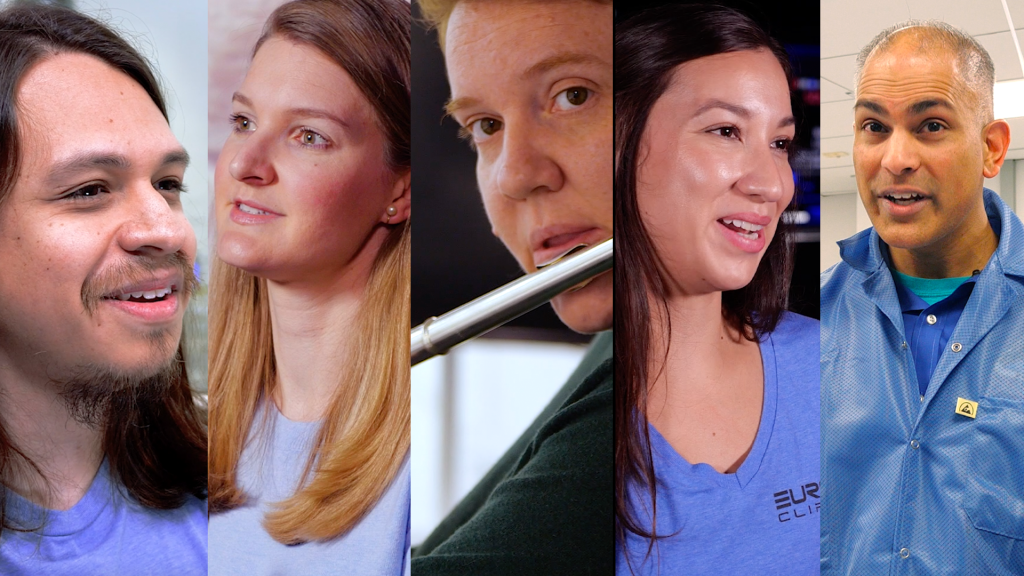
New Video Series Spotlights Engineers on NASA’s Europa Clipper Mission
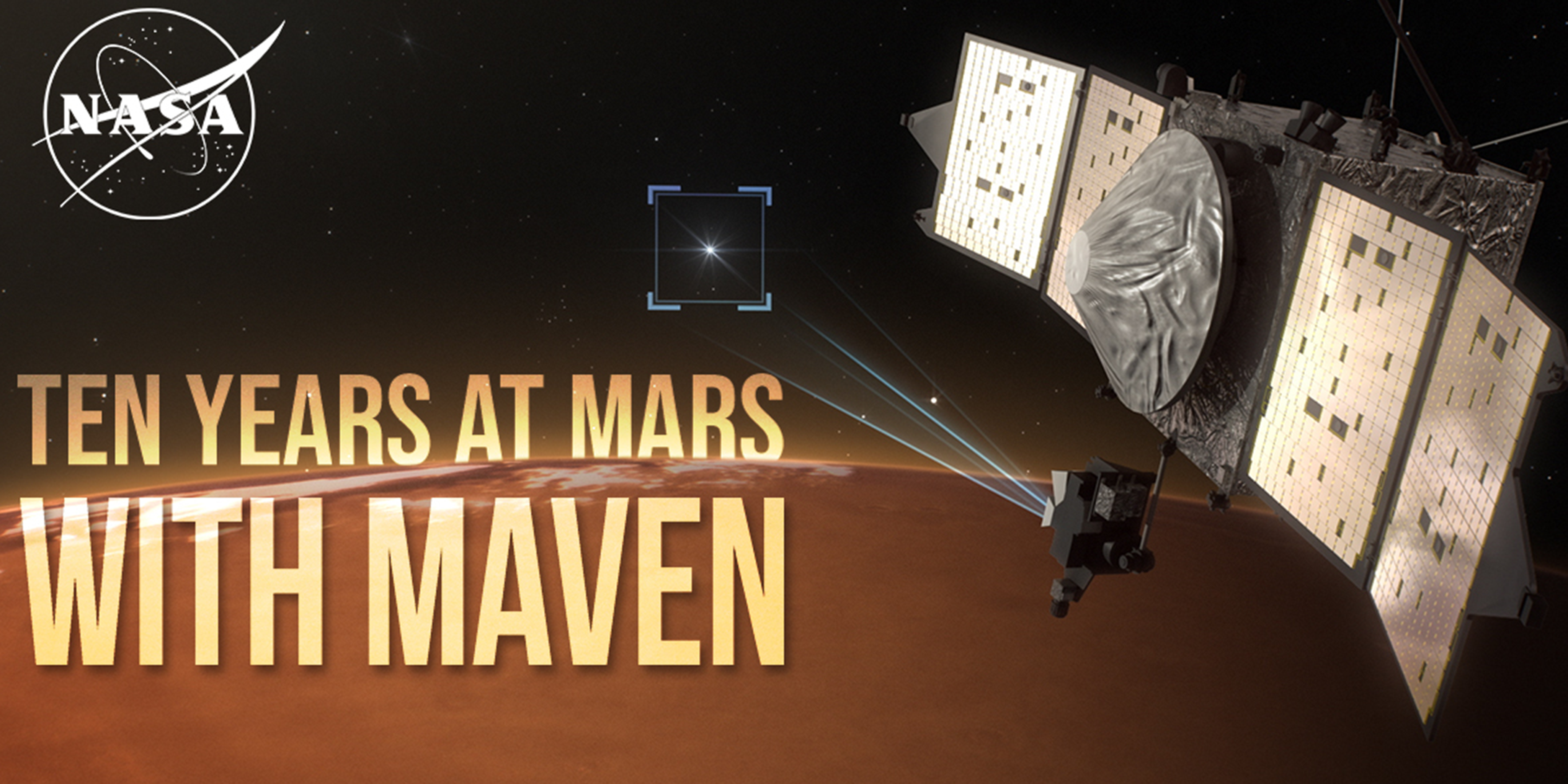
Celebrating 10 Years at Mars with NASA’s MAVEN Mission
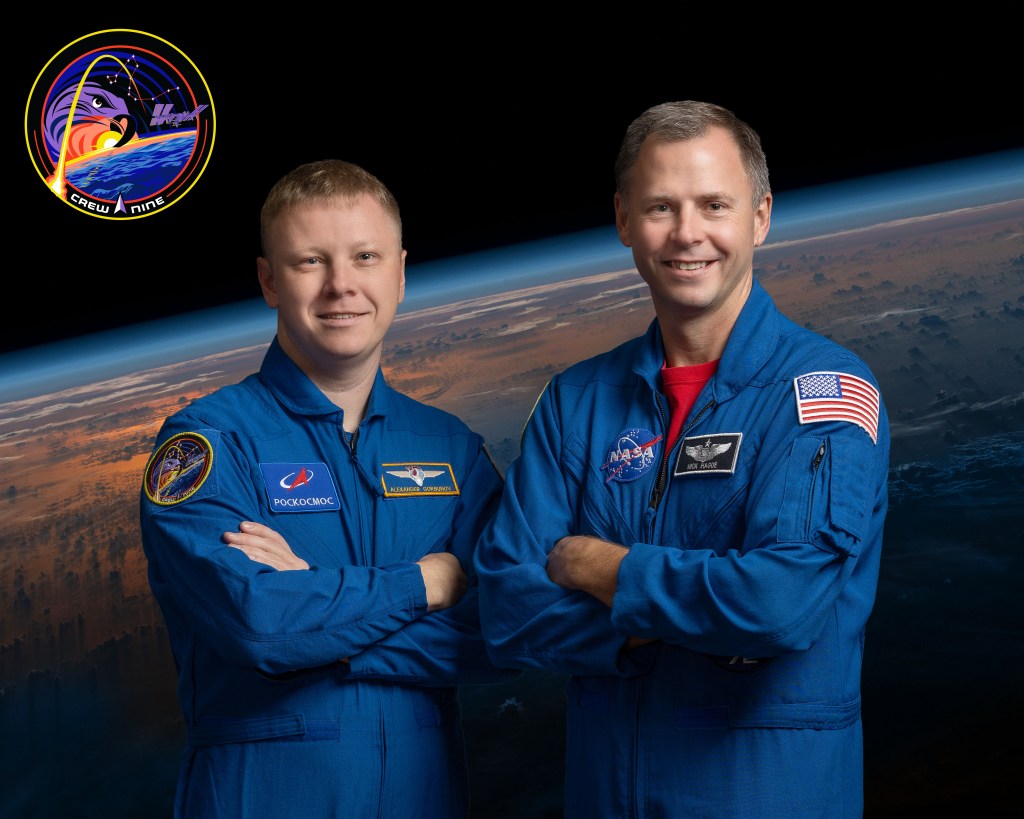
What You Need to Know about NASA’s SpaceX Crew-9 Mission
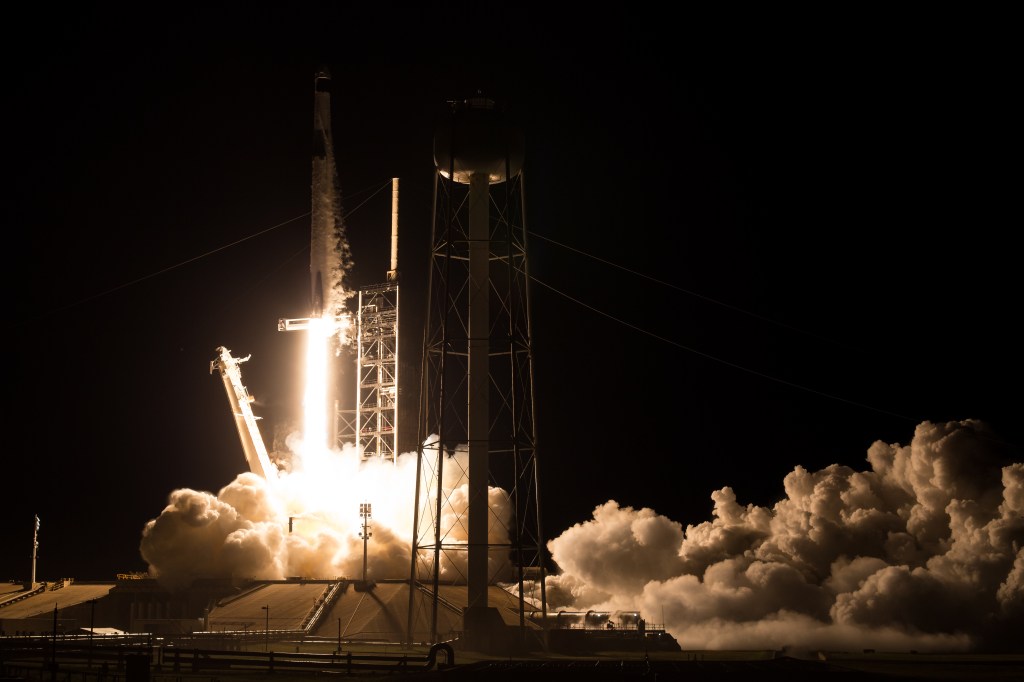
NASA Invites Public to Join as Virtual Guests for SpaceX Crew-9 Launch
Educational activities in space.

NASA Astronaut Tracy C. Dyson’s Scientific Mission aboard Space Station
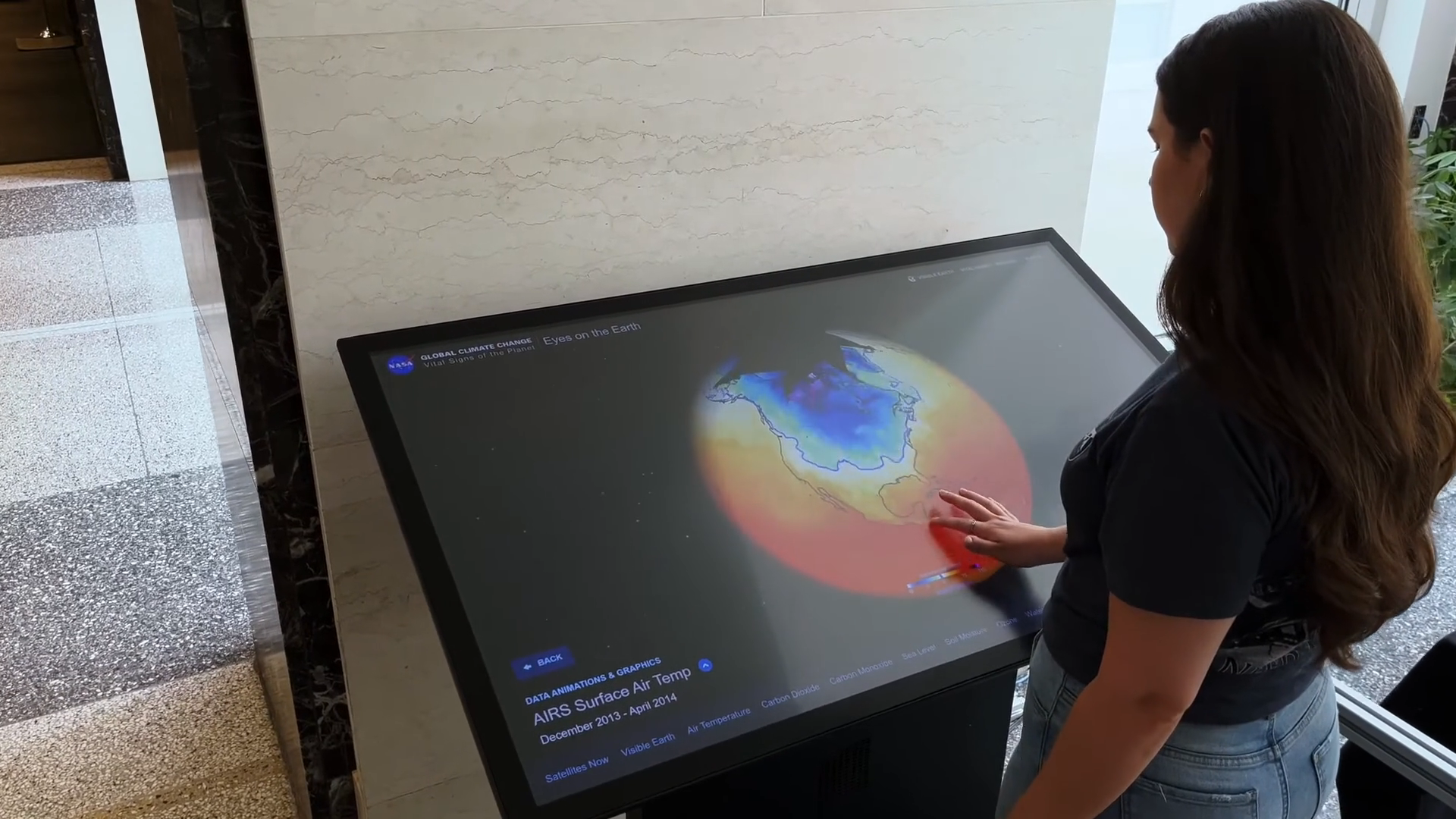
NASA’s Eyes for Museums


NASA Analysis Shows Irreversible Sea Level Rise for Pacific Islands
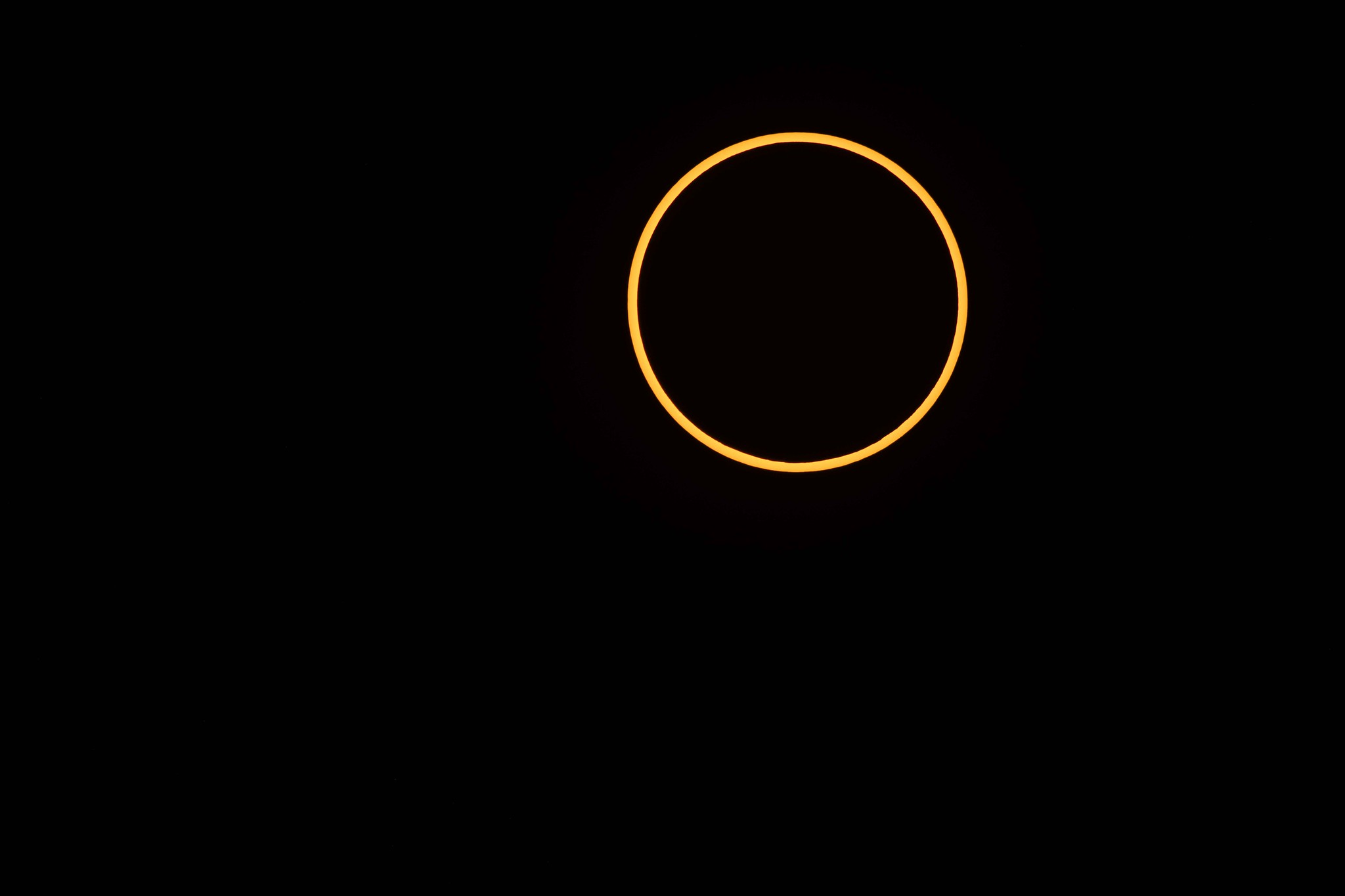
Oct. 2 Annular Solar Eclipse
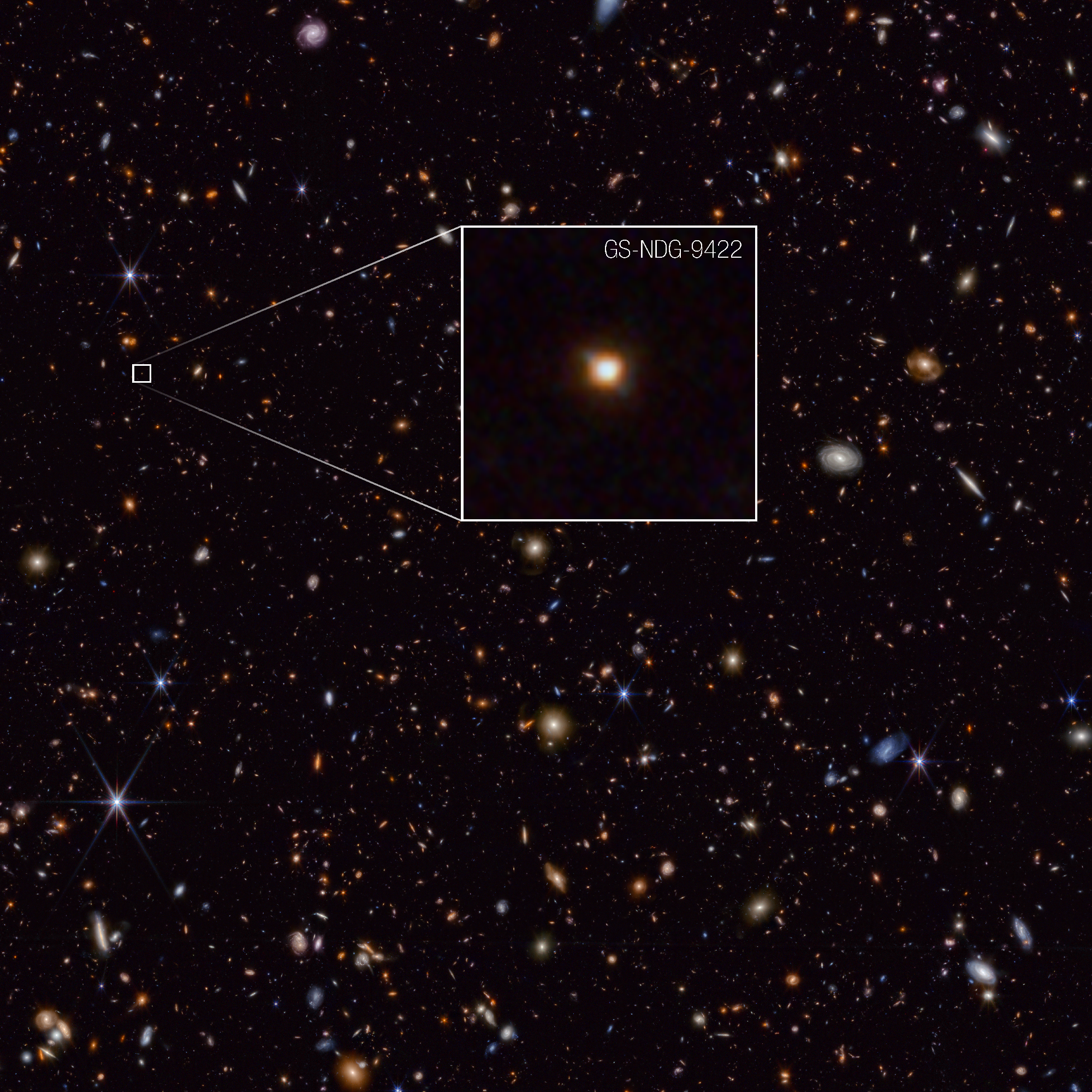
In Odd Galaxy, NASA’s Webb Finds Potential Missing Link to First Stars
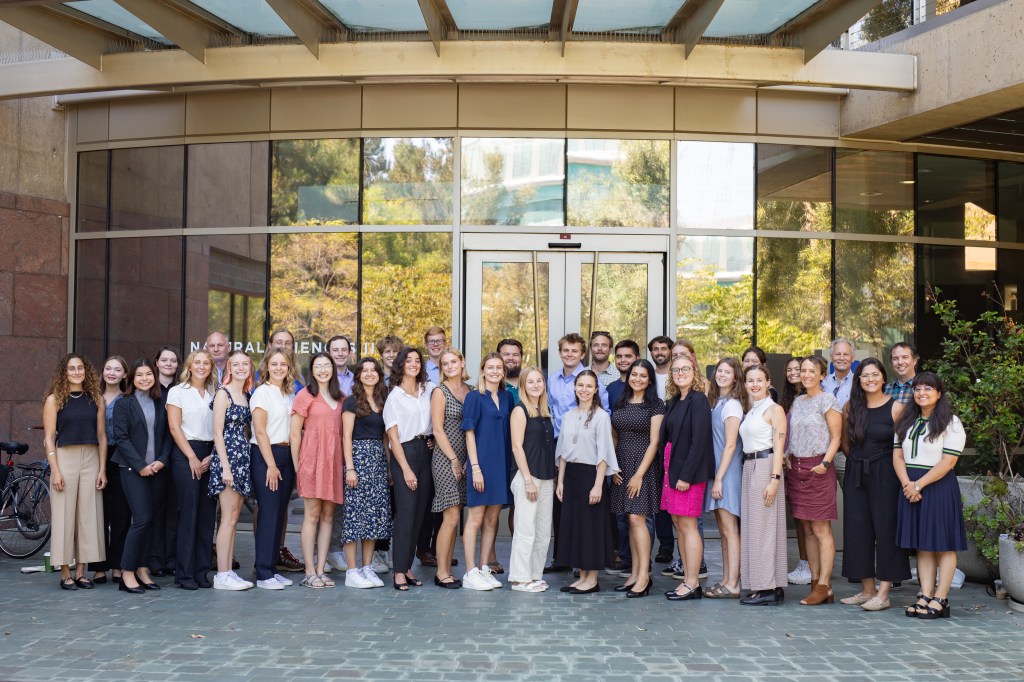
2024 SARP West Closeout
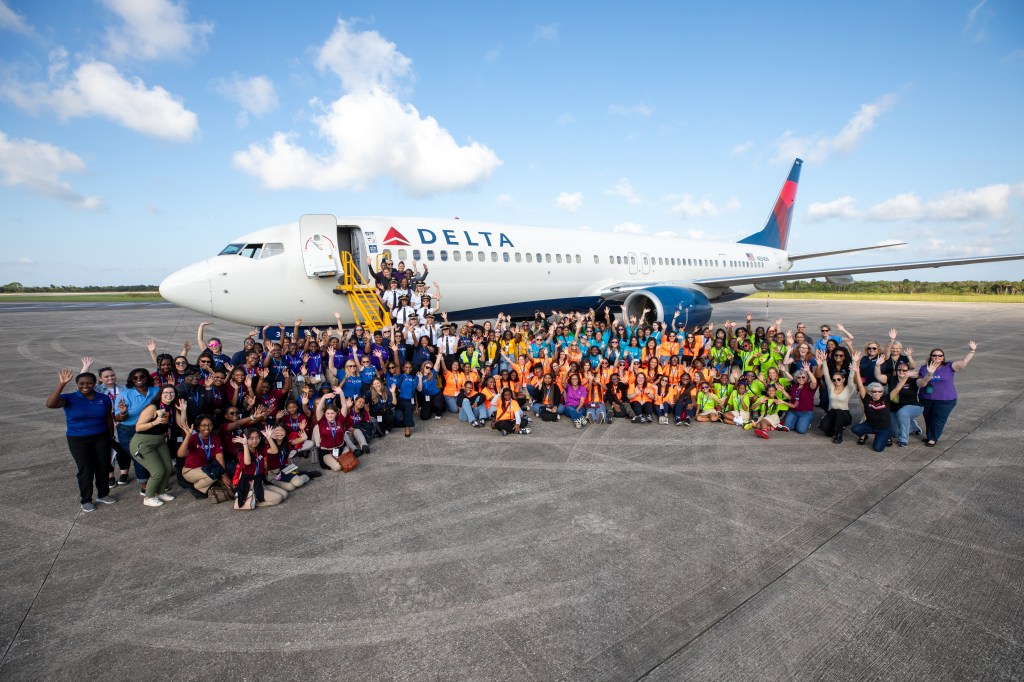
Girls in STEM Inspired to Fly High at NASA Kennedy

ARMD Solicitations

Students Soar at NASA Glenn’s Aviation Day
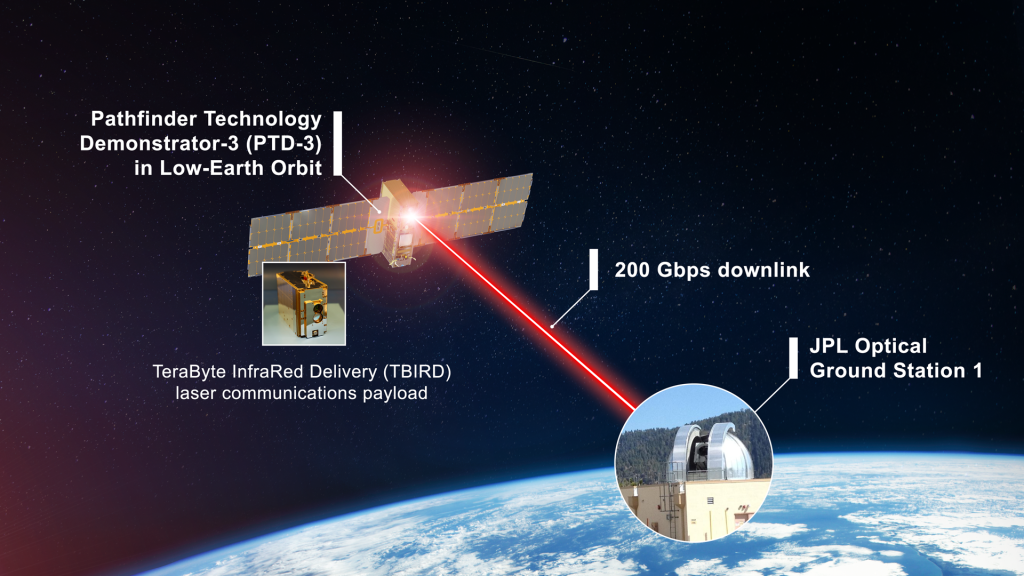
NASA’s Record-Breaking Laser Demo Completes Mission
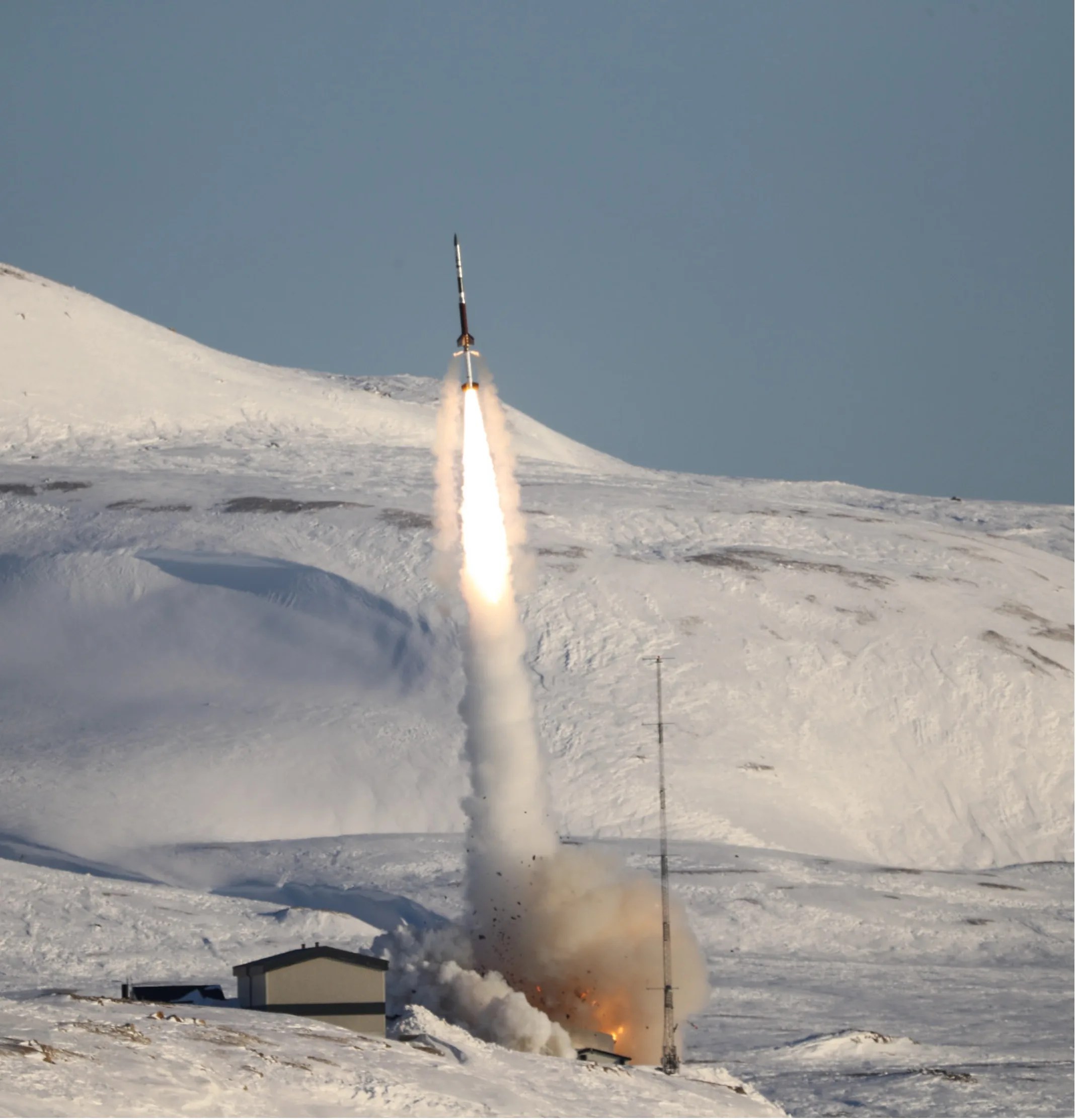
Amendment 52: B.9 Low-Cost Access to Space 2028 Peruvian campaign Update
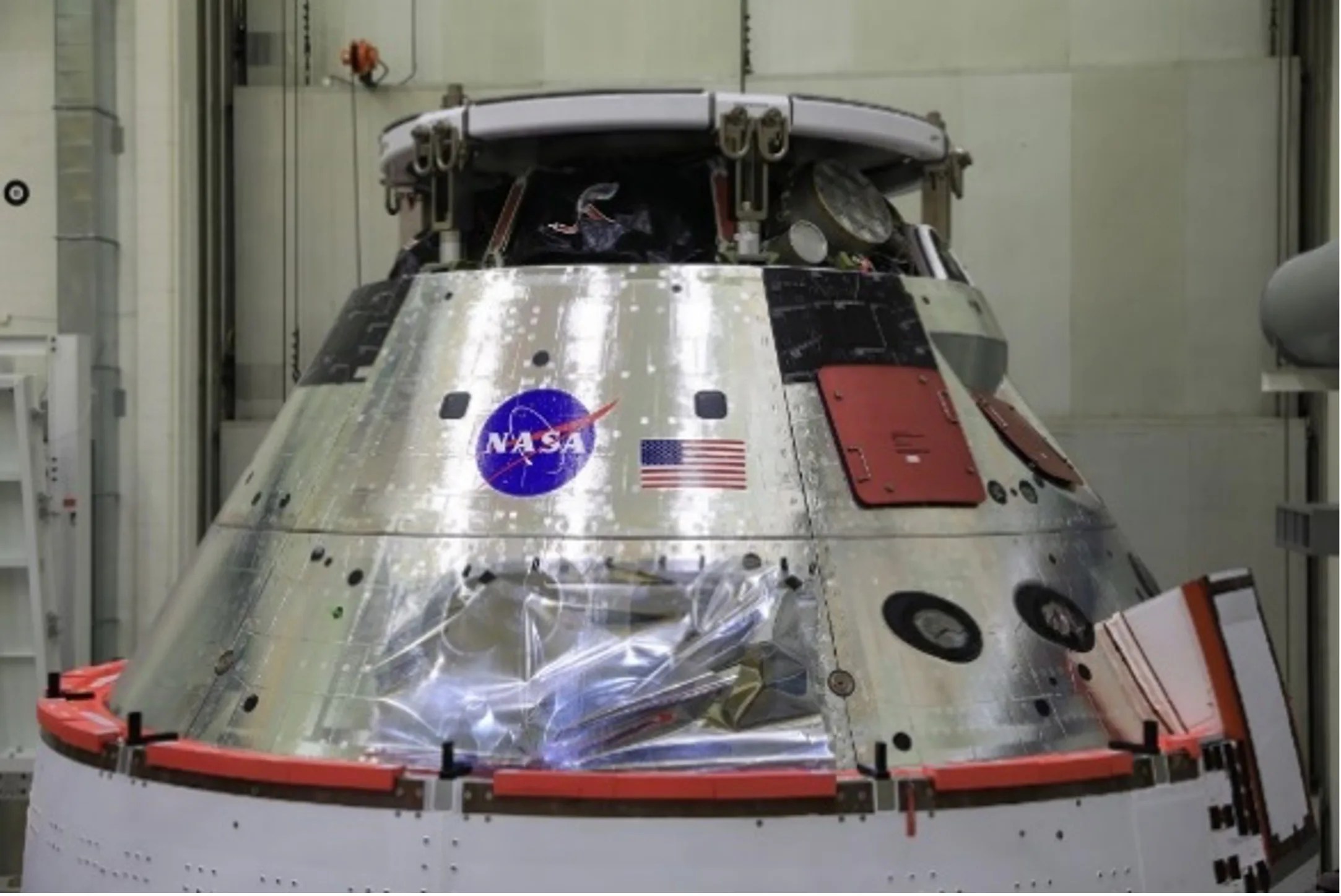
Amendment 51: F.13 Lunar Terrain Vehicle Instruments Program Final Text and Due Dates.

NASA Moon to Mars Architecture Art Challenge
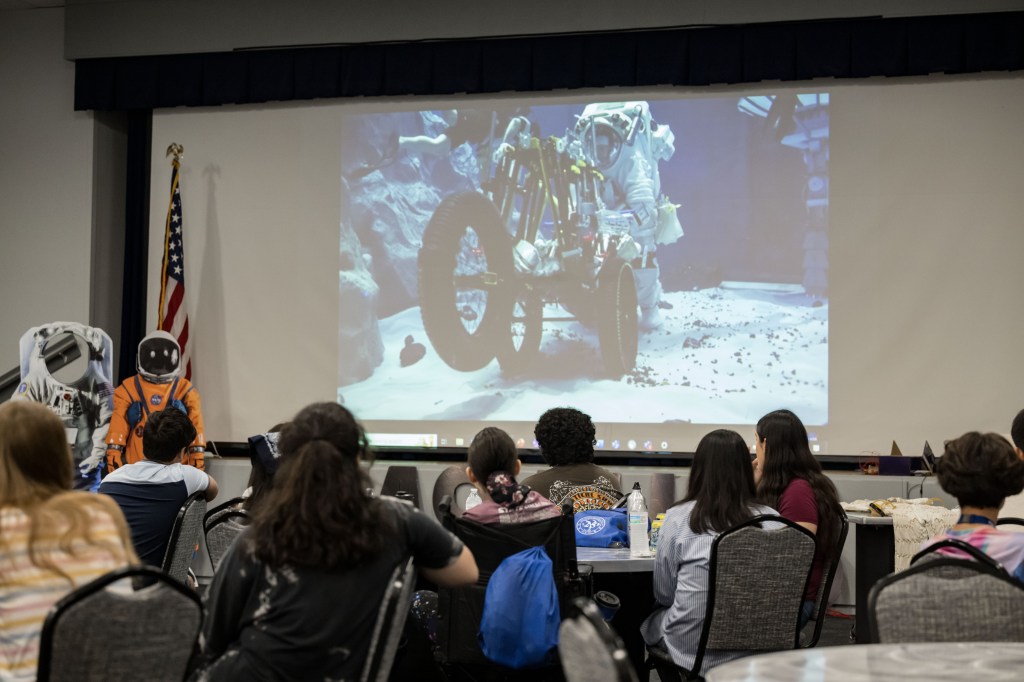
Bring NASA Into Your Classroom This Fall Through Virtual Experiences

How Do I Navigate NASA Learning Resources and Opportunities?
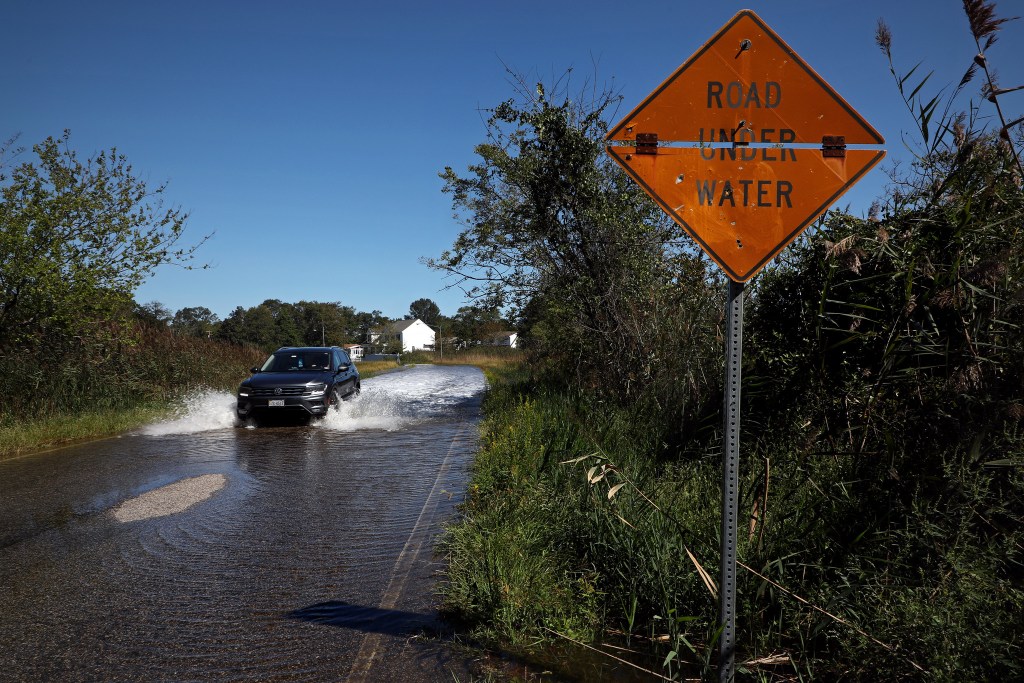
NASA Helps Build New Federal Sea Level Rise Website

NASA Expands Small Business, Industry Engagement Resources

La NASA invita a los medios al lanzamiento de Europa Clipper

El X-59 de la NASA avanza en las pruebas de preparación para volar

La NASA invita a creadores de las redes sociales al lanzamiento de la misión Europa Clipper
30 years ago: voyager 2’s historic neptune flyby.
Anthony Greicius
Getting there, being there.
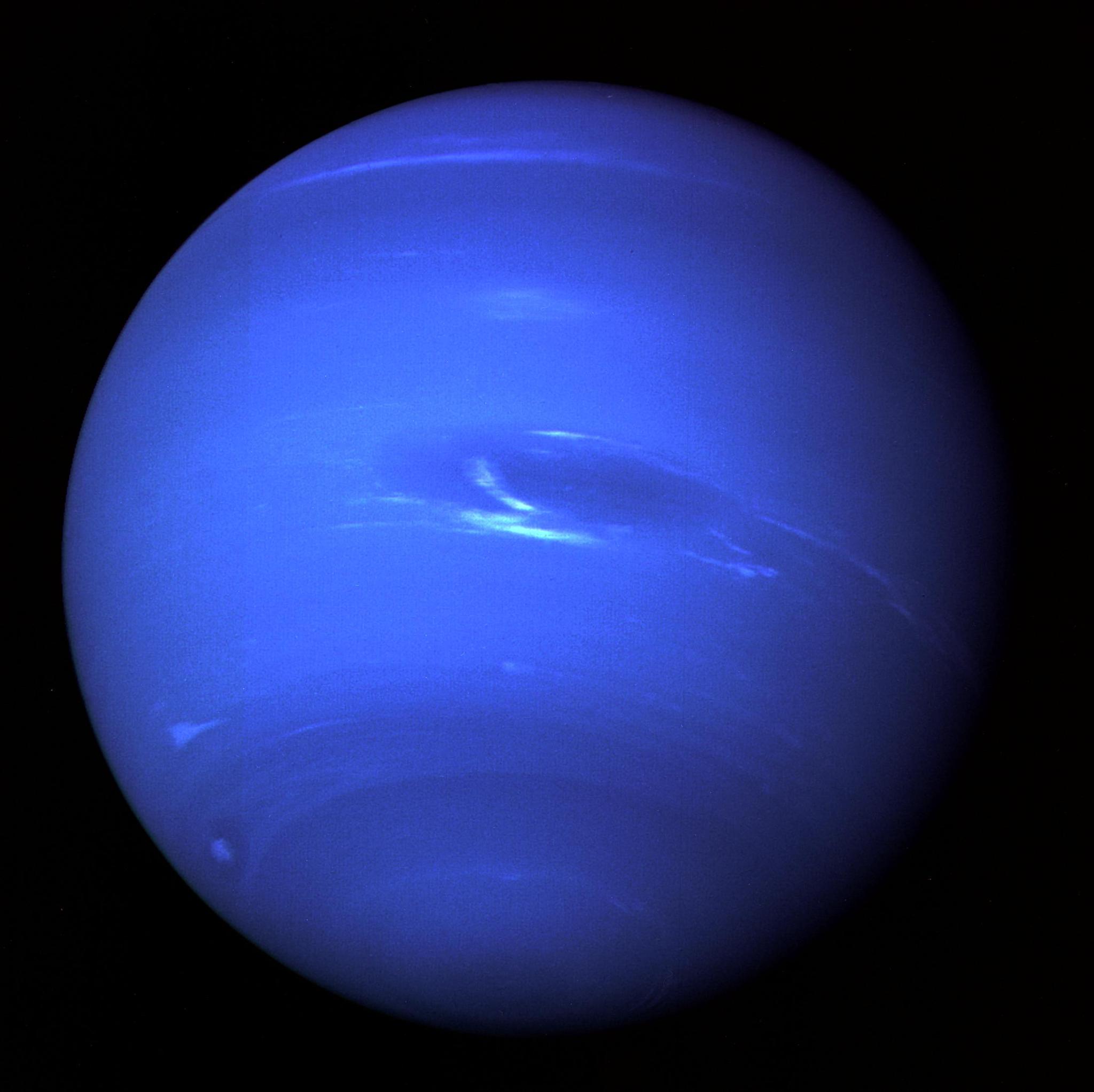
Thirty years ago, on Aug. 25, 1989, NASA’s Voyager 2 spacecraft made a close flyby of Neptune, giving humanity its first close-up of our solar system’s eighth planet. Marking the end of the Voyager mission’s Grand Tour of the solar system’s four giant planets — Jupiter, Saturn, Uranus and Neptune — that first was also a last: No other spacecraft has visited Neptune since.
“The Voyager planetary program really was an opportunity to show the public what science is all about,” said Ed Stone, a professor of physics at Caltech and Voyager’s project scientist since 1975. “Every day we learned something new.”
Wrapped in teal- and cobalt-colored bands of clouds, the planet that Voyager 2 revealed looked like a blue-hued sibling to Jupiter and Saturn, the blue indicating the presence of methane. A massive, slate-colored storm was dubbed the “Great Dark Spot,” similar to Jupiter’s Great Red Spot. Six new moons and four rings were discovered.
During the encounter, the engineering team carefully changed the probe’s direction and speed so that it could do a close flyby of the planet’s largest moon, Triton. The flyby showed evidence of geologically young surfaces and active geysers spewing material skyward. This indicated that Triton was not simply a solid ball of ice, even though it had the lowest surface temperature of any natural body observed by Voyager: minus 391 degrees Fahrenheit (minus 235 degrees Celsius).
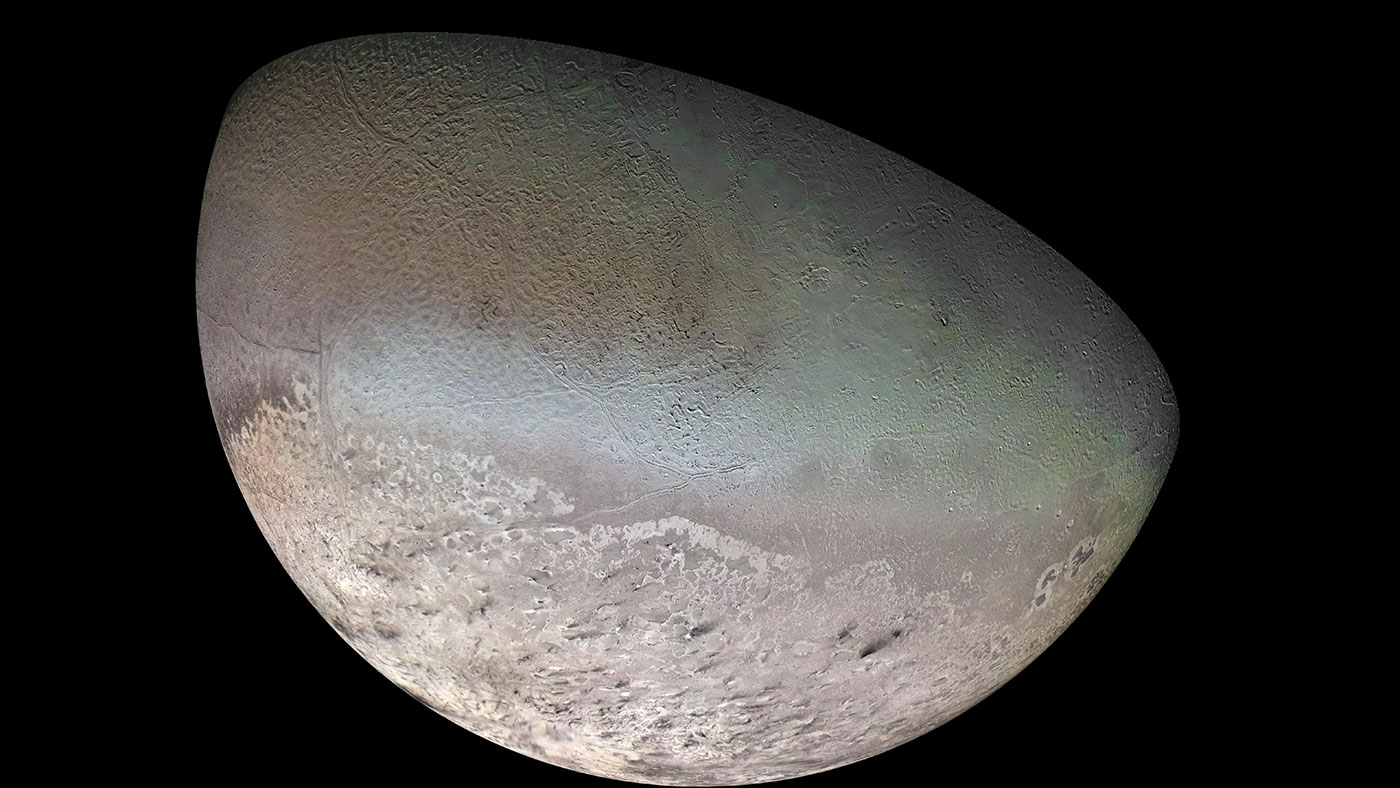
The conclusion of the Neptune flyby marked the beginning of the Voyager Interstellar Mission, which continues today, 42 years after launch. Voyager 2 and its twin, Voyager 1 (which had also flown by Jupiter and Saturn), continue to send back dispatches from the outer reaches of our solar system. At the time of the Neptune encounter, Voyager 2 was about 2.9 billion miles (4.7 billion kilometers) from Earth; today it is 11 billion miles (18 billion kilometers) from us. The faster-moving Voyager 1 is 13 billion miles (21 billion kilometers) from Earth.
By the time Voyager 2 reached Neptune, the Voyager mission team had completed five planetary encounters. But the big blue planet still posed unique challenges.
About 30 times farther from the Sun than Earth is, the icy giant receives only about 0.001 times the amount of sunlight that Earth does. In such low light, Voyager 2’s camera required longer exposures to get quality images. But because the spacecraft would reach a maximum speed of about 60,000 mph (90,000 kph) relative to Earth, a long exposure time would make the image blurry. (Imagine trying to take a picture of a roadside sign from the window of a speeding car.)
So the team programmed Voyager 2’s thrusters to fire gently during the close approach, rotating the spacecraft to keep the camera focused on its target without interrupting the spacecraft’s overall speed and direction.
The probe’s great distance also meant that by the time radio signals from Voyager 2 reached Earth, they were weaker than those of other flybys. But the spacecraft had the advantage of time: The Voyagers communicate with Earth via the Deep Space Network, or DSN, which utilizes radio antennas at sites in Madrid, Spain; Canberra, Australia; and Goldstone, California. During Voyager 2’s Uranus encounter in 1986, the three largest DSN antennas were 64-meters (210 feet) wide. To assist with the Neptune encounter, the DSN expanded the dishes to 70 meters (230 feet). They also included nearby non-DSN antennas to collect data, including another 64-meter (210 feet) dish in Parkes, Australia, and multiple 25-meter (82 feet) antennas at the Very Large Array in New Mexico.
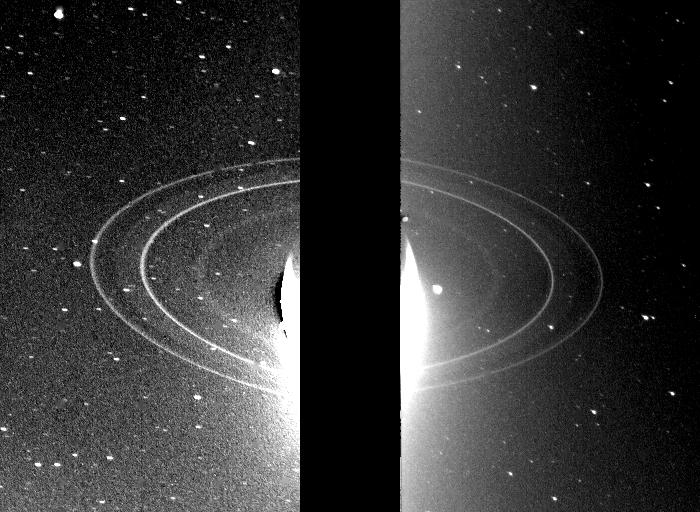
The effort ensured that engineers could hear Voyager loud and clear. It also increased how much data could be sent back to Earth in a given period, enabling the spacecraft to send back more pictures from the flyby.
In the week leading up to that August 1989 close encounter, the atmosphere was electric at NASA’s Jet Propulsion Laboratory in Pasadena, California, which manages the Voyager mission. As images taken by Voyager 2 during its Neptune approach made the four-hour journey to Earth, Voyager team members would crowd around computer monitors around the Lab to see.
“One of the things that made the Voyager planetary encounters different from missions today is that there was no internet that would have allowed the whole team and the whole world to see the pictures at the same time,” Stone said. “The images were available in real time at a limited number of locations.”
But the team was committed to giving the public updates as quickly as possible, so from Aug. 21 to Aug. 29, they would share their discoveries with the world during daily press conferences. On Aug. 24, a program called “Voyager All Night” broadcast regular updates from the probe’s closest encounter with the planet, which took place at 4 a.m. GMT (9 p.m. in California on Aug. 24).
The next morning, Vice President Dan Quayle visited the Lab to commend the Voyager team. That night, Chuck Berry, whose song “Johnny B. Goode” was included on the Golden Record that flew with both Voyagers, played at JPL’s celebration of the feat.
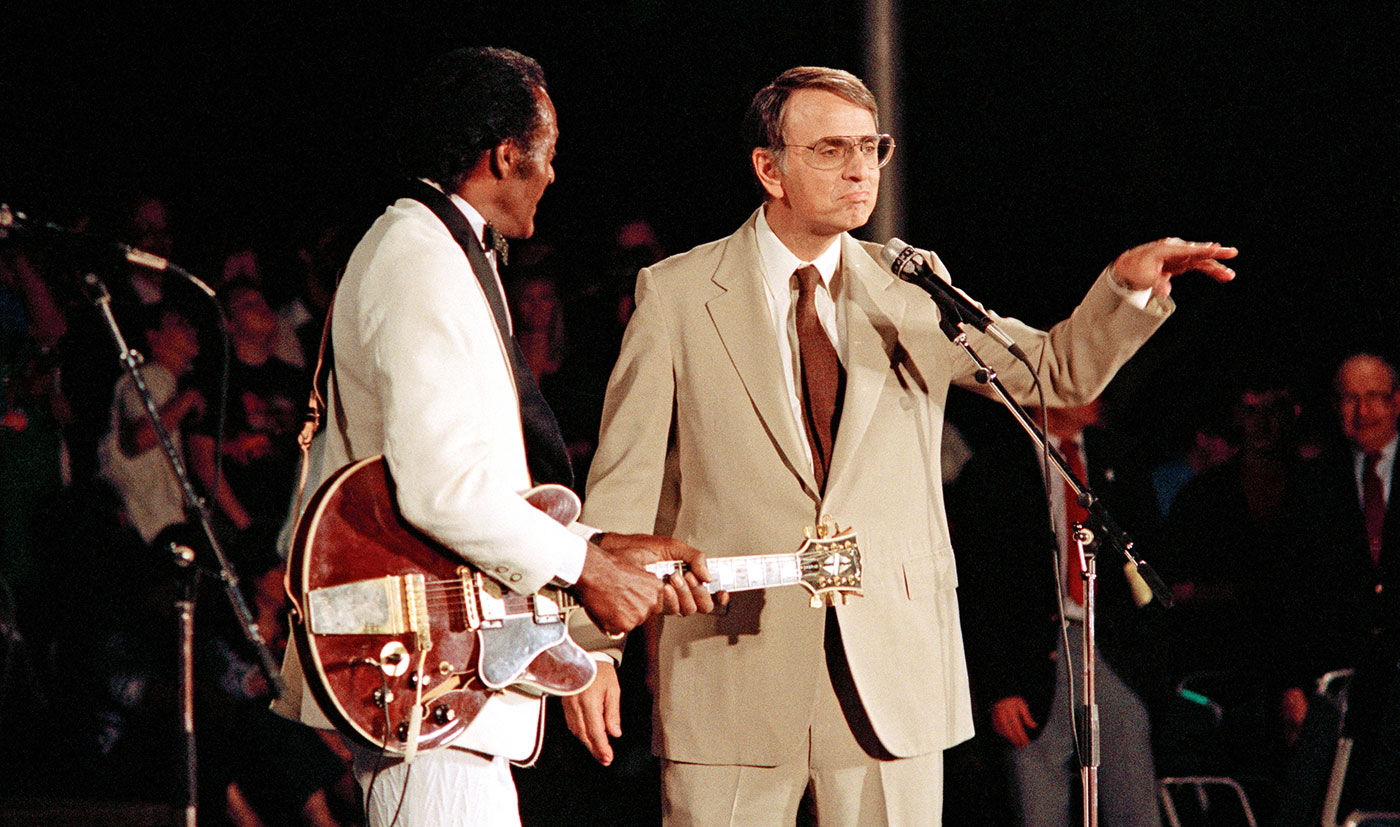
Of course, the Voyagers’ achievements extend far beyond that historic week three decades ago. Both probes have now entered interstellar space after exiting the heliosphere — the protective bubble around the planets created by a high-speed flow of particles and magnetic fields spewed outward by our Sun.
They are reporting back to Earth on the “weather” and conditions from this region filled with the debris from stars that exploded elsewhere in our galaxy. They have taken humanity’s first tenuous step into the cosmic ocean where no other operating probes have flown.
Voyager data also complement other missions, including NASA’s Interstellar Boundary Explorer ( IBEX ), which is remotely sensing that boundary where particles from our Sun collide with material from the rest of the galaxy. And NASA is preparing the Interstellar Mapping and Acceleration Probe ( IMAP ), due to launch in 2024, to capitalize on Voyager observations.
The Voyagers send their findings back to DSN antennas with 13-watt transmitters — about enough power to run a refrigerator light bulb.
“Every day they travel somewhere that human probes have never been before,” said Stone. “Forty-two years after launch, and they’re still exploring.”
For more information about the Voyager mission visit:
https://voyager.jpl.nasa.gov/
For more images of Neptune taken by Voyager 2 visit:
https://voyager.jpl.nasa.gov/galleries/images-voyager-took/neptune/
Calla Cofield Jet Propulsion Laboratory, Pasadena, Calif. 626-808-2469 [email protected]
- Become A Member
- Gift Membership
- Kids Membership
- Other Ways to Give
- Explore Worlds
- Defend Earth
How We Work
- Education & Public Outreach
- Space Policy & Advocacy
- Science & Technology
- Global Collaboration
Our Results
Learn how our members and community are changing the worlds.
Our citizen-funded spacecraft successfully demonstrated solar sailing for CubeSats.
Space Topics
- Planets & Other Worlds
- Space Missions
- Space Policy
- Planetary Radio
- Space Images
The Planetary Report
The search for life.
How life on Earth shapes the hunt for life out there.
Get Involved
Membership programs for explorers of all ages.
Get updates and weekly tools to learn, share, and advocate for space exploration.
Volunteer as a space advocate.
Support Our Mission
- Renew Membership
- Society Projects
The Planetary Fund
Accelerate progress in our three core enterprises — Explore Worlds, Find Life, and Defend Earth. You can support the entire fund, or designate a core enterprise of your choice.
- Strategic Framework
- News & Press
The Planetary Society
Know the cosmos and our place within it.
Our Mission
Empowering the world's citizens to advance space science and exploration.
- Explore Space
- Take Action
- Member Community
- Account Center
- “Exploration is in our nature.” - Carl Sagan
Bruce Murray Space Image Library
Voyager 2's best image of Miranda
Voyager 2's images of Miranda were the highest-resolution of any of Uranus' moons, which was fortunate because Miranda turned out to have interesting and bizarre geology. The images for this mosaic were captured on January 24, 1986, between 16:37 and 16:54 UTC; in the 17 minutes that separated the first from the final images, Miranda rotated noticeably, so it has always been a challenge to assemble this mosaic. This version was created by Ted Stryk.
For full functionality of this site it is necessary to enable JavaScript. Here are instructions on how to enable JavaScript in your web browser .
- Skip to main content
- Keyboard shortcuts for audio player
After a 12.3 billion-mile 'shout,' NASA regains full contact with Voyager 2
Emily Olson
Ayana Archie

A NASA image of one of the twin Voyager space probes. The Jet Propulsion Laboratory lost contact with Voyager 2 on July 21 after mistakenly pointing its antenna 2 degrees away from Earth. On Friday, contact was fully restored. NASA/Getty Images hide caption
A NASA image of one of the twin Voyager space probes. The Jet Propulsion Laboratory lost contact with Voyager 2 on July 21 after mistakenly pointing its antenna 2 degrees away from Earth. On Friday, contact was fully restored.
Talk about a long-distance call.
NASA said it resumed full communications with the Voyager 2 on Friday after almost two weeks of silence from the interstellar spacecraft.
The agency's Jet Propulsion Laboratory said a series of ground antennas, part of the Deep Space Network, registered a carrier signal from Voyager 2 on Tuesday. However, the signal was too faint.
A Deep Space Network facility in Australia then sent "the equivalent of an interstellar 'shout' " to the Voyager 2 telling it to turn its antenna back toward Earth. The signal was sent more than 12.3 billion miles away and it took 37 hours to get a response from the spacecraft, NASA said.
Scientists received a response at about 12:30 a.m. ET Friday. Voyager 2 is now operating normally, returning science and telemetry data, and "remains on its expected trajectory," NASA said.
NASA said Friday that it lost contact with Voyager 2 on July 21 after "a series of planned commands" inadvertently caused the craft to turn its antenna 2 degrees away from the direction of its home planet.

NASA is keeping Voyager 2 going until at least 2026 by tapping into backup power
What might seem like a slight error had big consequences: NASA previously said it wouldn't be able to communicate with the craft until October, when the satellite would go through one of its routine repositioning steps.
"That is a long time to wait, so we'll try sending up commands several times" before October, program manager Suzanne Dodd told The Associated Press.

These are the 4 astronauts who'll take a trip around the moon next year
Even if Voyager 2 had failed to reestablish communications until fall, the engineers expected it to stay moving on its planned trajectory on the edge of the solar system.
Voyager 2 entered interstellar space in November 2018 — more than 40 years since it launched from Cape Canaveral, Fla. To this day, Voyager 2 remains one of only two human-made objects to ever operate outside the heliosphere, which NASA defines as "the protective bubble of particles and magnetic fields generated by the Sun."
Its primary mission was to study the outer solar system, and already, Voyager 2 has proved its status as a planetary pioneer . Equipped with several imaging instruments, the spacecraft is credited with documenting the discovery of 16 new moons, six new rings and Neptune's "Great Dark Spot."

Voyager 2 Bids Adieu To The Heliosphere, Entering Interstellar Space
Voyager 2 is also carrying some precious cargo, like a message in a bottle, should it find itself as the subject of another world's discovery: a golden record containing a variety of natural sounds, greetings in 55 languages and a 90-minute selection of music.
Last month's command mix-up foreshadows the craft's inevitable end an estimated three years from now.
"Eventually, there will not be enough electricity to power even one instrument," reads a NASA page documenting the spacecraft's travels . "Then, Voyager 2 will silently continue its eternal journey among the stars."
Meanwhile, Voyager 2's sister spacecraft, Voyager 1, is still broadcasting and transmitting data just fine from a slightly farther vantage point of 15 billion miles away.
Correction Aug. 3, 2023
A previous version of this article implied that Voyager 2 flew past Uranus in 2018 when, in fact, the spacecraft concluded its encounter with the planet and started heading toward Neptune in 1986. Voyager 2 entered interstellar space in November 2018.
- Jet Propulsion Laboratory

Voyager at Jupiter
Photography of Jupiter began in January 1979, when images of the brightly banded planet already exceeded the best taken from Earth. Voyager 1 completed its Jupiter encounter in early April, after taking almost 19,000 pictures and many other scientific measurements. Voyager 2 picked up the baton in late April and its encounter continued into August. They took more than 33,000 pictures of Jupiter and its five major satellites.
Popular Tags
- James Webb Space Telescope
- James Webb Space Telescope – Engineering images
- Hubble Space Telescope
- 2023 Technology Showcase for Planetary Science
- Earth Observer
- James Webb Space Telescope - Science images
- Earth Observatory Image of the Day


COMMENTS
Images taken by the Voyager 2 Spacecraft. Go to PIAxxxxx: Refine this list of images by: Target: 1989N2 Ariel Callisto Dione Earth Enceladus Europa Ganymede Iapetus Io J Rings Jupiter Miranda N Rings Neptune Nereid Oberon Phoebe S Rings Saturn Sun Tethys Titan Titania Triton U Rings Umbriel Uranus. Mission:
Images Voyager Took. The Voyager 1 and 2 spacecraft explored Jupiter, Saturn, Uranus and Neptune before starting their journey toward interstellar space. ... This narrow-angle color image of the Earth, dubbed 'Pale Blue Dot', is a part of the first ever 'portrait' of the solar system taken by Voyager 1. ... Voyager 2 spacecraft flew past ...
Voyager 1 Present Position. This simulated view of the solar system allows you to explore the planets, moons, asteroids, comets, and spacecraft exploring our solar system. You can also fast-forward and rewind in real-time. NASA/JPL-Caltech.
Each of the two Voyager spacecraft launched in 1977 carry a 12-inch gold-plated phonograph record with images and sounds from Earth. Credit: NASA/JPL-Caltech. ... This image, taken by NASA's Voyager 2 early in the morning of Aug. 23, 1989, is a false color image of Triton, Neptune's largest satellite; mottling in the bright southern hemisphere ...
Refine this list of images by: ... Voyager 2: Hello Interstellar Space, Goodbye Heliosphere Full Resolution: ... Voyager Signal Spotted By Earth Radio Telescopes Full Resolution: TIFF (264.2 kB) JPEG (4.896 kB) 2013-09-12: Sol (our sun) Voyager: 5432x3025x3: PIA17046: ...
Galleries. Watch videos and view images of Voyager 1 and 2 as they passed by Saturn, Jupiter, Uranus and Neptune and get a glimpse into the images relating to the Golden Record. Keep Exploring.
Triton. This narrow-angle color image of the Earth, dubbed the "Pale Blue Dot," is a part of the first ever 'portrait' of the taken by Voyager 1. The spacecraft acquired a total of 60 frames for a ...
Photography of Jupiter began in January 1979, when images of the brightly banded planet already exceeded the best taken from Earth. Voyager 1 completed its Jupiter encounter in early April, after taking almost 19,000 pictures and many other scientific measurements. Voyager 2 picked up the baton in late April and its encounter continued into August.
Had Titan not been successful, Voyager 2 would have followed its in the footsteps of its twin, and the Uranus and Neptune encounters would not have been possible. The Voyager 1 and 2 spacecrafts each carried two cameras, wide-angle and narrow-angle. Calibrated and geometrically corrected versions of all of the Voyager images can be found at:
Voyager 2 returned images of Jupiter, as well as its moons Amalthea, Io, Callisto, ... NASA will first try the procedure with Voyager 2, which is closer to Earth. [106] Future of the probe. The probe is expected to keep transmitting weak radio messages until at least the mid-2020s, ...
NASA/Getty Images. The clear ring structure of Saturn can be seen in this image taken form the Voyager 2 spacecraft on Jan. 1. 1981.Science & Society Picture Library/SSPL/Getty Images. Image of ...
Video. The 116 photos NASA picked to explain our world to aliens. by Joss Fong. Nov 11, 2015, 4:00 PM UTC. Joss Fong is a founding member of the Vox video team and a producer focused on science ...
Image: NASA / JPL / Ted Stryk. Saturn as seen by Voyager 1 The last picture from Voyager 1's approach to Saturn in which the entire planet and ring system can be seen in a single frame. Image: NASA/JPL/Björn Jónsson. Voyager 2's best view of Enceladus This was the Voyager mission's best view of Enceladus, captured by Voyager 2 on August 26 ...
Refine this list of images by: ... Voyager 2: Hello Interstellar Space, Goodbye Heliosphere Full Resolution: ... Voyager Signal Spotted By Earth Radio Telescopes Full Resolution: TIFF (264.2 kB) JPEG (4.896 kB) 2013-09-12: Sol (our sun) Voyager: 5432x3025x3: PIA17046: ...
Article. Forty-five years ago, the Voyager 2 spacecraft left Earth to begin an epic journey that continues to this day. The first of a pair of spacecraft, Voyager 2 lifted off on Aug. 20, 1977. NASA's Jet Propulsion Laboratory (JPL) in Pasadena, California, manages the spacecraft on their missions to explore the outer planets and beyond.
Images on the Golden Record. The following is a partial listing of pictures electronically placed on the phonograph records which are carried onboard the Voyager 1 and 2 spacecraft.
In the week leading up to that August 1989 close encounter, the atmosphere was electric at NASA's Jet Propulsion Laboratory in Pasadena, California, which manages the Voyager mission. As images taken by Voyager 2 during its Neptune approach made the four-hour journey to Earth, Voyager team members would crowd around computer monitors around ...
Voyager 2 at Neptune From the edge of our planetary system, the spacecraft Voyager 2 transmitted back to Earth images of Neptune, its large moon Triton, its strange ring system and its retinue of small satellites. In this montage constructed from high-resolution images, the south pole of Triton dominates, with cloud-streaked Neptune in the background.
NASA's Voyager 2 is the second spacecraft to enter interstellar space. On Dec. 10, 2018, the spacecraft joined its twin - Voyager 1 - as the only human-made objects to enter the space between the stars. Voyager 2 is the only spacecraft to study all four of the solar system's giant planets at close range. Voyager 2 discovered a 14th moon at ...
This color Voyager 2 image mosaic shows the water-ice-covered surface of Enceladus, one of Saturn's icy moons. Enceladus' diameter of just 500 km would fit across the state of Arizona, yet despite its small size Enceladus exhibits one of the most interesting surfaces of all the icy satellites. Enceladus reflects about 90% of the incident ...
NASA / JPL / Ted Stryk. Voyager 2's images of Miranda were the highest-resolution of any of Uranus' moons, which was fortunate because Miranda turned out to have interesting and bizarre geology. The images for this mosaic were captured on January 24, 1986, between 16:37 and 16:54 UTC; in the 17 minutes that separated the first from the final ...
The Jet Propulsion Laboratory lost contact with Voyager 2 on July 21 after mistakenly pointing its antenna 2 degrees away from Earth. On Friday, contact was fully restored. NASA/Getty Images
Voyager at Jupiter. Photography of Jupiter began in January 1979, when images of the brightly banded planet already exceeded the best taken from Earth. Voyager 1 completed its Jupiter encounter in early April, after taking almost 19,000 pictures and many other scientific measurements. Voyager 2 picked up the baton in late April and its ...